27.1E - Postoperative Management of Orthopaedic Surgeries
Note: CEUs not offered for this course.
Course Description
This 6-monograph course covers postoperative management for injuries and pathology of the hip, knee, ankle/foot, cervical/lumbar spine, shoulder, and elbow. Each monograph addresses the anatomy and biomechanics of the structure, a review of select or common injuries, and nonsurgical and surgical management. Emphasis is placed on rehabilitation guidelines, precautions and contraindications to care, and also expected outcomes.
Course Overview
Course Format: Online
Note
This course is available to you for your enrichment only. Please note, CEUs are not offered for this course.

You need to login to purchase this course. If you do not have an account, click on the box below and follow the instructions for creating an account.
Login or Create AccountPricing
| Online Only | |
|---|---|
| AOPT Member | $60 |
| Non-AOPT Member | $75 |
Cancellation Policy
Due to the automation of our learning management system allowing you instant access to the online content and the immediate order placement for a plus print product, there are no refunds after an order is placed.
International Shipping Policy
International shipping is NOT available when purchasing a plus print copy of our independent study courses. The online copy allows you instant access to any course with the ability to print a pdf copy. Note: APO and FPO addresses are serviced by the USPS and the Military Postal Service Agency and are available for plus print shipping.
Course Objectives
- Describe anatomy of the hip joint and how structure can relate to pathological conditions.
- Describe indications for surgical intervention and select surgical procedures of the hip.
- Describe postoperative rehabilitation intervention techniques following hip surgery.
- Know the common structures and pathomechanics involved in knee injury.
- Describe common surgical interventions for patients with knee pathology.
- Describe the physical therapy guidelines, phases, and goals for a patient who has undergone knee surgery.
- Understand the etiology of a calcaneal fracture, Lisfranc fracture/dislocation, and an Achilles tendon rupture.
- Identify the advantages and disadvantages of surgical fixation versus closed treatment for calcaneal fractures.
- Develop appropriate treatment plans for patients who have sustained a calcaneal fracture, Lisfranc fracture/dislocation, or an Achilles tendon rupture.
- Understand specific treatment precautions for patients who have sustained an Achilles tendon rupture.
- Develop an appropriate treatment plan for patients who have sustained a calcaneal fracture.
- Synthesize the current evidence comparing conservative care versus early surgery in different subgroups of patients with cervical and lumbar spine pain.
- Identify the clinical findings that identify patients who are most likely to benefit from cervical or lumbar surgical intervention.
- Compare the different surgical options for treatment of cervical and lumbar pain.
- Describe the benefits of rehabilitation versus no rehabilitation following cervical and lumbar surgery.
- Screen and appropriately manage postoperative complications for presented pathologies.
- Develop an evidence-based rehabilitation program for patients who have undergone different cervical and lumbar surgeries.
- Integrate biomechanics and pathomechanics of the shoulder to evaluation and treatment.
- Implement evidence-based nonoperative treatment strategies for shoulder pathology.
- Describe evidence-based rehabilitation guidelines following shoulder surgery.
- Understand the postoperative precautions associated with shoulder surgery.
- Understand the anatomy and biomechanics of the elbow complex and how it relates to surgical interventions, tissue healing, and treatment.
- Understand postoperative guidelines and treatment progression for the elbow complex.
- Identify the unique precautions and contraindications associated with each of the surgical procedures described for the elbow complex.
- Apply appropriate patient-reported outcome measures for select surgical procedures of the hip, knee, ankle/foot, spine, shoulder, and elbow.
Topics and Authors
- Hip
Keelan Enseki, PT, MS, OCS, SCS, ATC, CSCS; Dave Kohlrieser, PT, DPT, OCS, SCS, CSCS; Craig Mauro, MD; Michaela Kopka, MD, FRCSC; Tom Ellis, MD - Knee
Michael J. Axe, MD; Lynn Synder-Mackler, PT, ScD, FAPTA; Anna Shovestul Grieder, PT, DPT, OCS; Jeff Miller, PT, DPT, OCS, SCS; Melissa Dreger, PT, DPT; Michael Palmer, PT, DPT, OCS; Tara Jo Manal, PT, DPT, OCS, SCS, FAPTA - Ankle and Foot
Stephanie Albin, DPT, OCS, FAAOMPT; Mark Cornwall, PT, PhD, FAPTA; Drew H. VanBoerum, MD - Cervical and Lumbar Spine
Paul Reuteman, PT, DPT, MHS, OCS, ATC - Shoulder
Brittany Lynch, PT, DPT, SCS, OCS; Heather Christain, PT, DPT, SCS, OCS, CSCS; Christopher L. McCrum, MD; Dharmesh Vyas, MD, PhD - Elbow
Julia L. Burlette, PT, DPT, OCS; Amy B. Pomrantz, PT, DPT, OCS, ATC; Chris A. Sebelski, PT, PhD, OCS, CSCS; Justin M. Lantz, PT, DPT, OCS, FAAOMPT; John M. Itamura, MD

